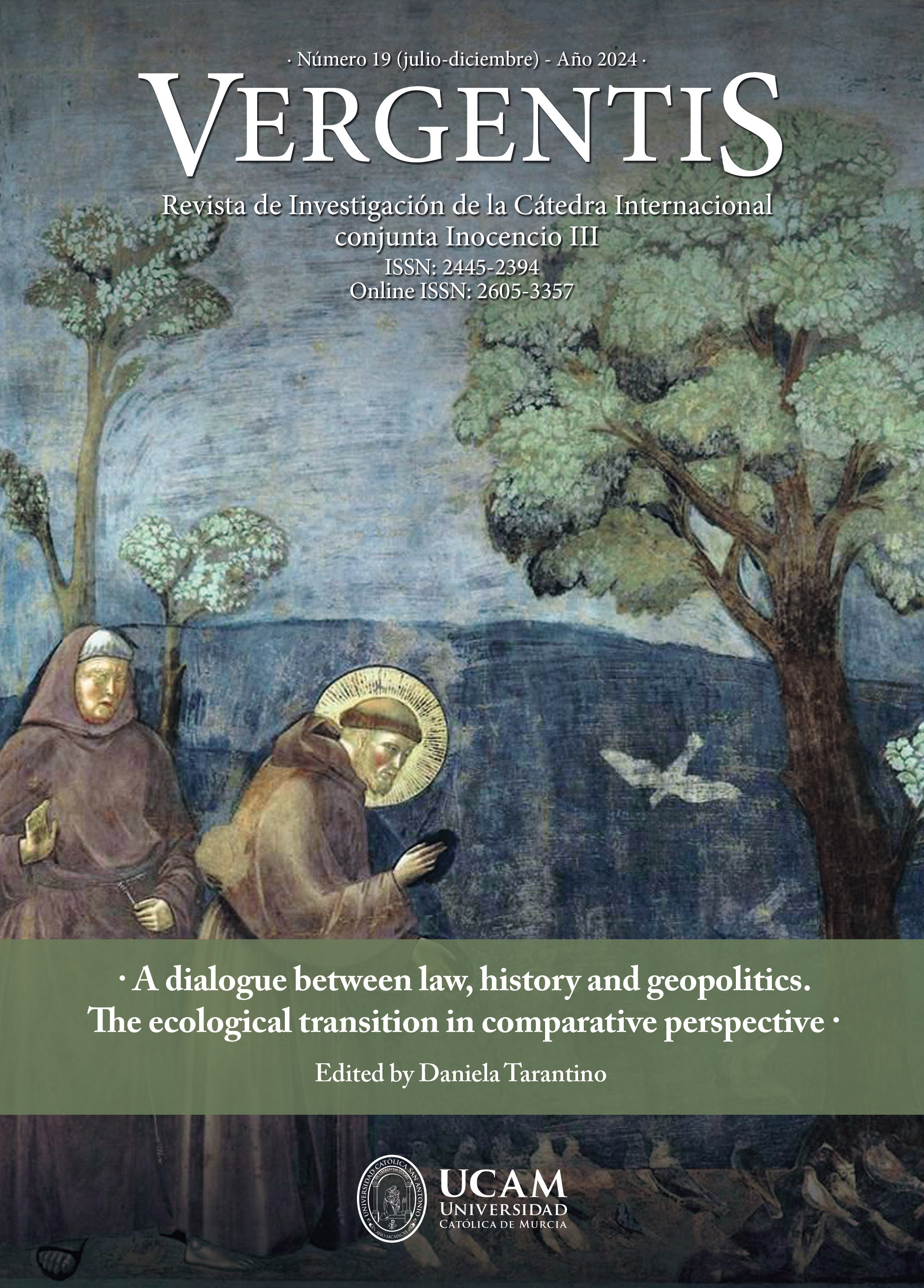Geographical knowledge, custody of creation and religious faith
DOI:
https://doi.org/10.12800/vg.19.3Keywords:
religious understanding of creation, Cosmogonies, geographical knowledgeAbstract
In every religious tradition, there are cosmogonic myths from which beliefs are derived that are at the basis of the relationships between the Divine, human beings and the natural environment. If analyzed in this context, cosmogonic narratives, as well as geographical knowledge, tend to provide an answer to the human need to name and give meaning to the location in space of man and of the phenomena with which he must interact. Mythical narratives, however, are not sufficient to answer the questions that emerge from the complex relationships between the phenomena of nature and human life, a problem which the man have tried to answer, with different attempts in time and space depending on the cultures in which they were developing - to arrive at a description of the World based on a 'Theoria', or rather on some form of rational explanation of reality. But trust in this kind of knowledge is based on assumptions that are antinomian to those on which the representation and understanding of reality grouded on religion. In fact, in the first case the explanation is based on principles immanent to the rationality of reality and in the second one on eternal and external values to the reality of the World of which the human mind is part. Hence the differences that over time have been reflected in the ways of representing the World and Man's relationships with Nature and therefore, the relationships between Geographical knowledge and religious faith.
Downloads
References
Brunello, Pietro, tosolini, Alberto, and tosolini, Federico. Bibbia e Geografia. Torino, 2013.
Bussagli, Maurizio. I miti dell’Oriente. Roma, 1976.
Canetti, Elias. "Introduzione." Il cuore del cacciatore, by Laurens van der Post, Milano, 2019.
Demetrio, Davide. "La religiosità della terra: una fede civile per la cura del mondo." Atti del XII Convegno liturgico internazionale: Liturgia e cosmo, fondamenti cosmologici dell'architettura liturgica, Bose, 29-31 maggio 2014, Magnano (Biella), 2021.
Il Corano, edited by Gabriele Mandel, Novara, 2013.
La Bibbia di Gerusalemme, Bologna, 1999.
Francesco, Papa. Laudato sì. Enciclica sulla cura della casa comune. Milano, 2015.
Galliano, Giuseppe. Geografia, cultura, religione. Genova, 2010.
Papotti, Davide. Geografie del sacro: riflessioni sul ruolo di spazio, territorio, paesaggio nella dimensione religiosa. Firenze, 2007.
Pinchemel, Pierre. "L’aventure géographique de la terre." Encyclopédie de Géographie, edited by André Bally, Robert Ferras, and Didier Pumain, Paris, 1992, pp. 3-21.
Robic, Marie-Claude. "Sur la naissance de l'espace géographique." L'Espace géographique, vol. 21, no. 2, 1992, pp. 140-142.
Severino, Emanuele. Capire la filosofia. La filosofia raccontata dai filosofi. Emanuele Severino racconta i presocratici e la nascita della filosofia. Roma, 2011, p. 13.
Spotorno, Marco. La carta è più interessante del Territorio? Antinomie geografiche. Genova, 2012.
Vallega, Alberto. La geografia del tempo: saggio di geografia culturale. Torino, 2006.
Vallega, Alberto. Geografia culturale. Luoghi, spazi, simboli. Torino, 2003.
Vallega, Alberto. "Spatial Systems And Knowledge Systems Beyond Modernity." Bollettino della Società Geografica Italiana, vol. XII, no. V, 2000, pp. 849-876.
Vallega, Alberto. "Esistenza e ambiente: nuovi scacchieri per il pensiero geografico." Bollettino della Società Geografica Italiana, vol. XI, no. VI, 1989, pp. 523-544.
Downloads
Published
How to Cite
Issue
Section
License
Copyright (c) 2025 Mauro Spotorno

This work is licensed under a Creative Commons Attribution-NonCommercial-NoDerivatives 4.0 International License.







